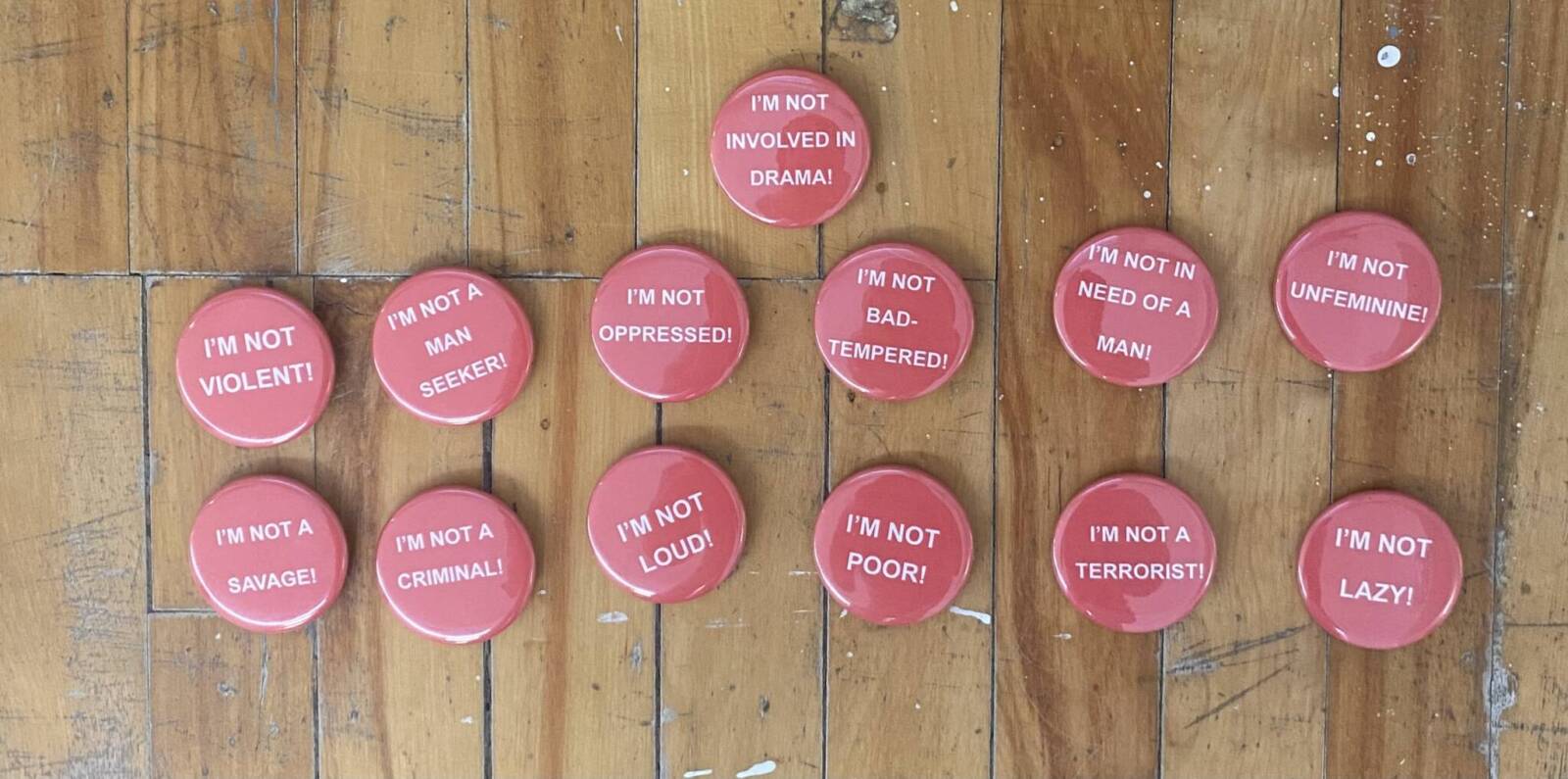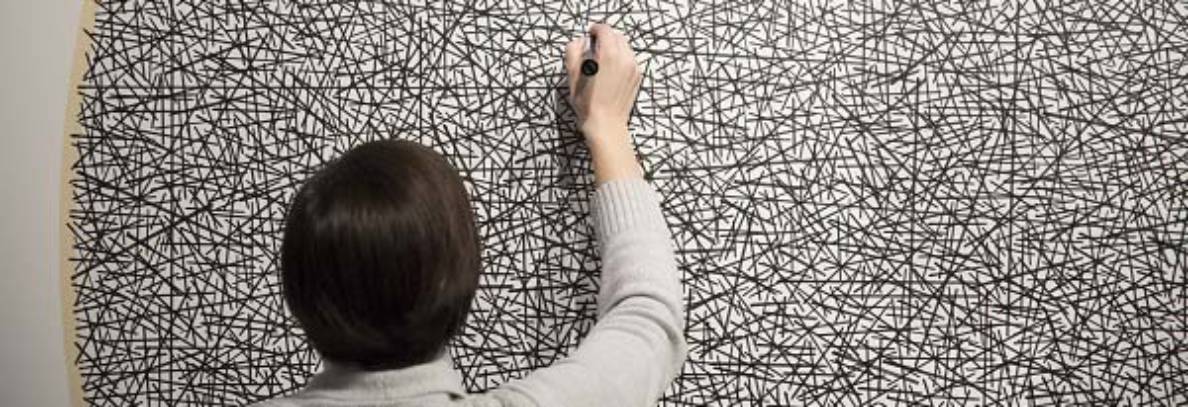Hello!
The Kilometer Walk By Lamiss Gharib
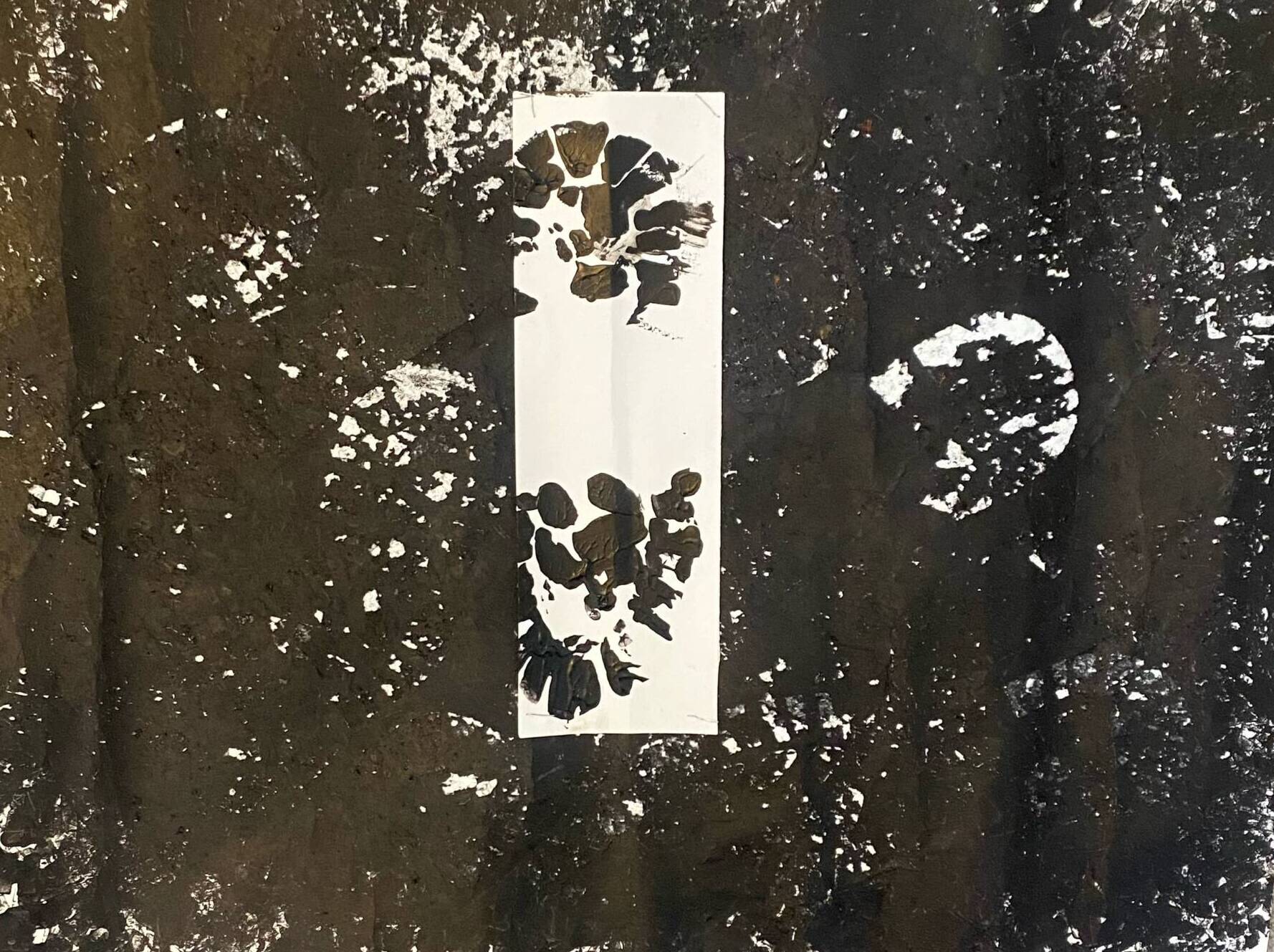
A kilometre is something difficult to calculate only in one way. For the project, I chose to view a kilometre in time. I chose to walk exactly 1 kilometre with a twist. That twist is that I will walk on a piece of watercolour paper with black acrylic paint on my boots. I chose to take this more hands-on approach to making a physical piece that represents a kilometre because I enjoy the unpredictable process of working paint on different surfaces. By conducting all these steps, it will create a unique and original abstract piece made of black footprints.
To start off this project, I had to calculate how long it would take me to walk 1 kilometre using maps. The result ended up being 14 minutes. After that, I made a sample of how the footprint would look which I later on included in the final piece. With the complicated step being done, all I had to do was put my boots in black paint and walk on the paper for 14 minutes.
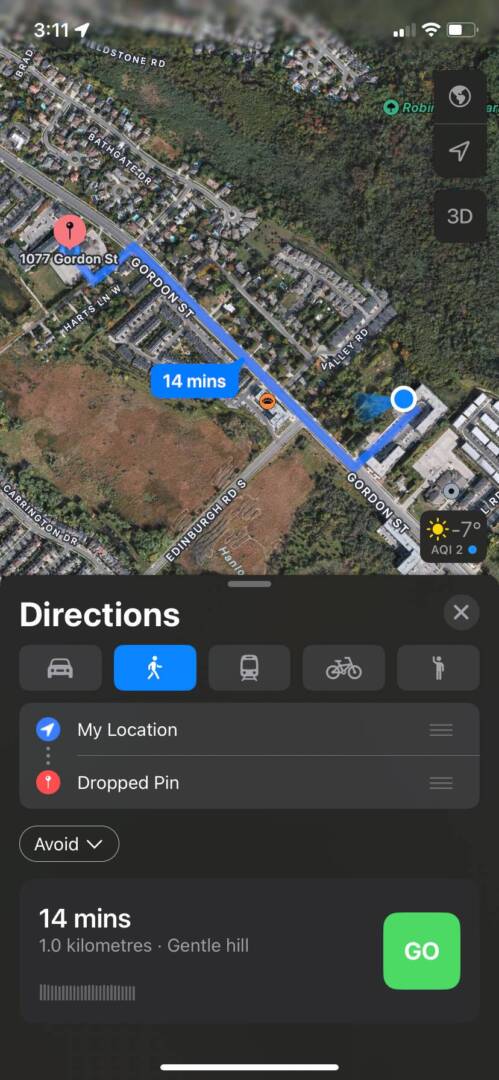
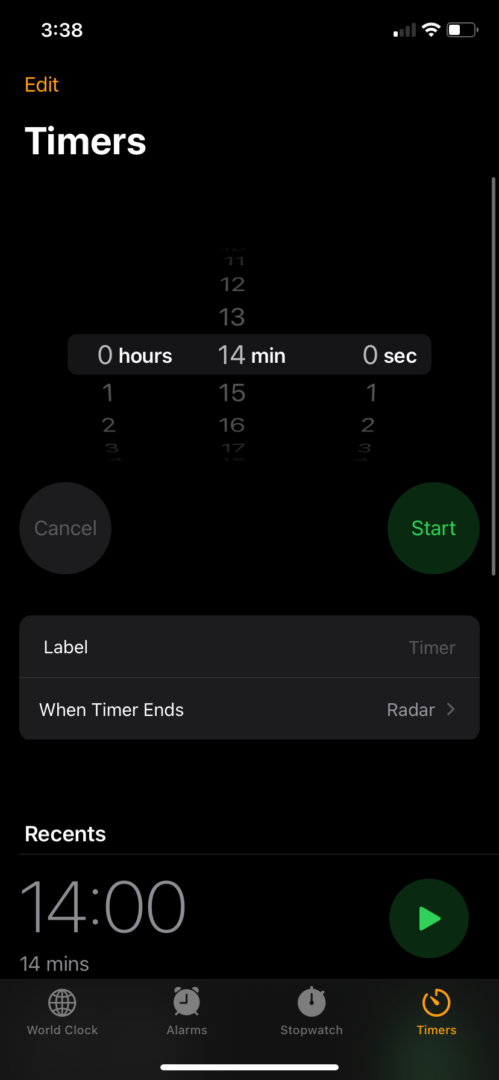
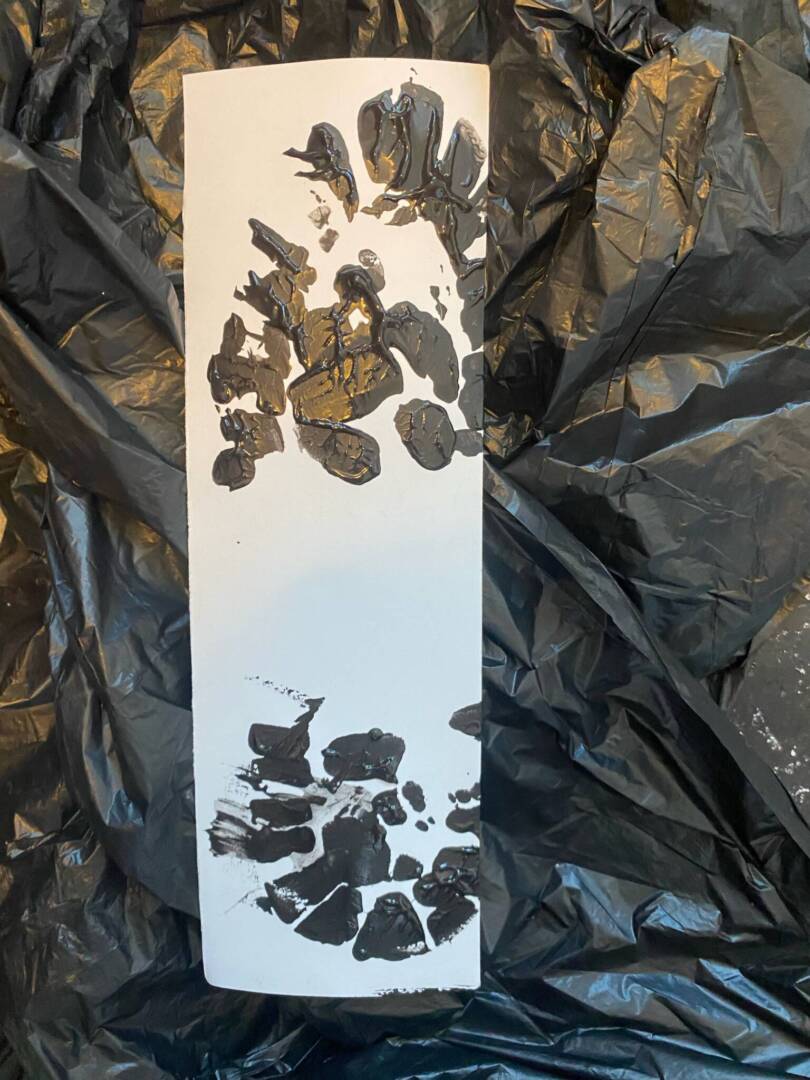
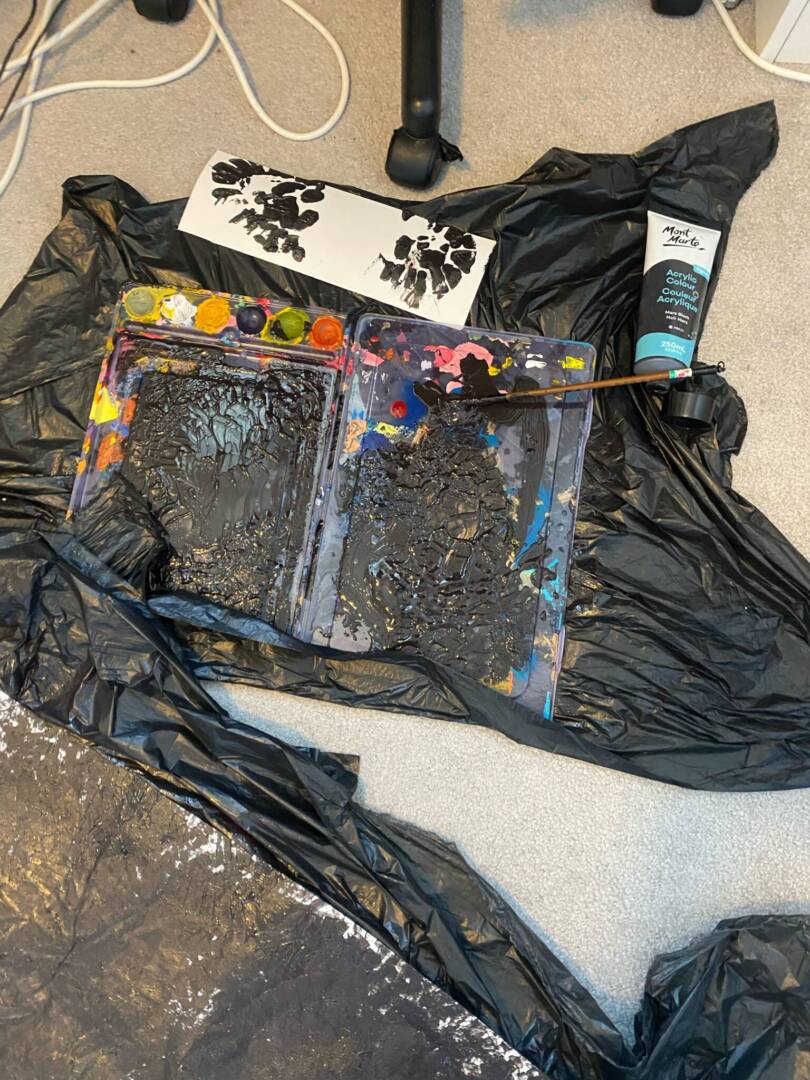
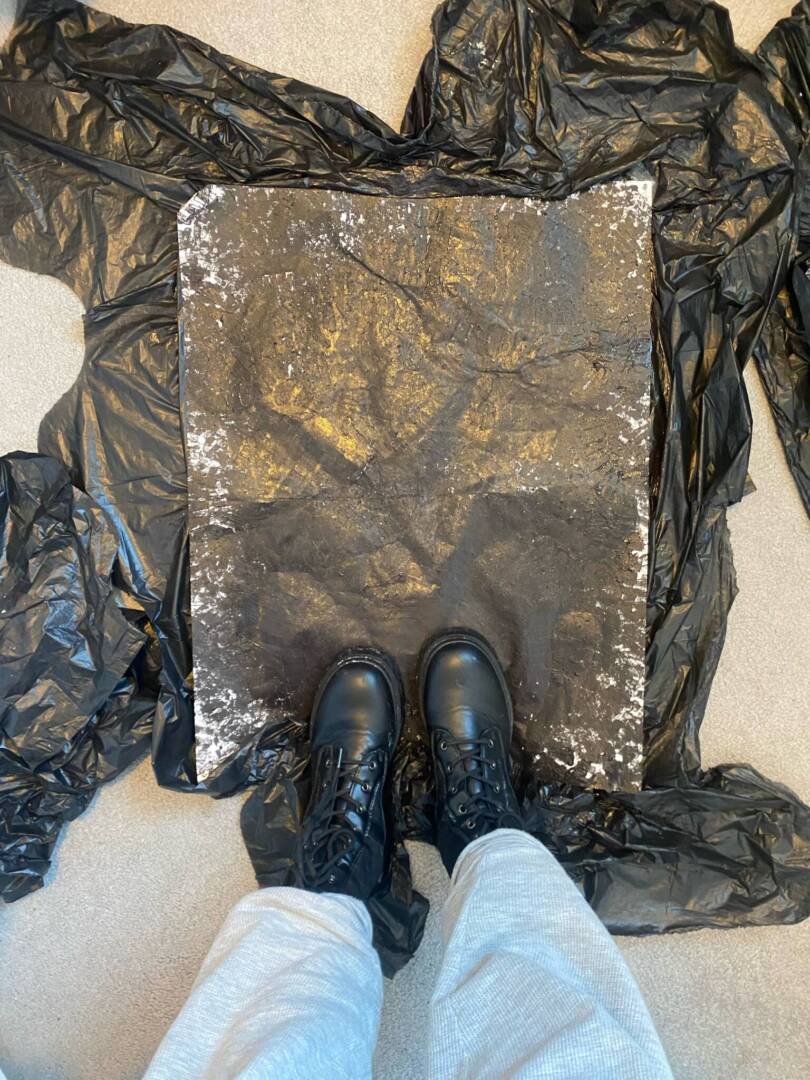
Now that I’m looking at it finished, I totally think this would work great in an abstract gallery showcase. These abstract showcases love to capture unique ways to create art which fits perfectly with this art piece made out of footsteps. But only time will tell if it will end up in an abstract gallery showcase!
Turning the Gestures of Everyday Life Into Art by Katja Heitmann
- There are many difficulties when it comes to the creation of this unique artwork. To start off, the dancers were not allowed to record the individuals’ movements leaving them to memorize and study the volunteers’ actions. On top of that, the dancers had to continually perform the gesture assigned to them. As a result, some dancers must have been mentally and physically challenged while also he is tired. However, there were also some gifts that came with this piece. Some volunteers in the article stated that they had never realized that their bodies acted in that way. This results in the volunteers having to reflect on themselves and their movement. Additionally, the volunteers have also discovered a newfound uniqueness to themselves.
- One movement that I saw myself in was Mahat Arab’s cracking of the knuckles when he was anxious. Arab’s tic strikes me as a defence mechanism from the stressful environment he is in. By cracking his left knuckles he is able to distract and calm himself to continue performing the stressful task, like talking on the phone. As an anxious person myself I have come to notice That I act the same way as an Arab in an anxious or stressful environment.
- When my brother is stressed or concentrating on a task he tends to bounce is right leg up and down. This tends to slightly shake is body leaving this face in a concentrated and stern expression. When my mom is stressed she cracks both of her knucks, unlike Arab. She also tilts her head to the right side while also looking down with a stressed look on her face. When my friend talks about meeting new people she tends to cross her arms around her body and straightens out her body. It’s almost as if she is protecting herself from getting hurt by new people.
FIELD TRIP ASSIGNMENT
During my time at the AGO, I absolutely loved the painting “Lynn Donoghue” by June Clark from the culture hip-hop exhibition. That painting caught my sight within seconds of me entering the floor. The large scale on which it was painted was unbelievable. I have never seen an artist make two artworks on one canvas/ panel but also make them cohesive. I admire how the artist drew two different parts of one person on one piece almost giving tribute to the models/ references beauty or a memory. It gives you a chance to examine the person’s significance in the artist’s eyes and also the artist’s painting/ layering process. My favourite part about this work is the style of painting. The ability to use single brush strokes of one colour to look like a face without blending ( or very little blending) is amazing. This is something I am working on improving in my own work, so I’m happy I got to see the style that I want to achieve in an amazing gallery like the AGO!
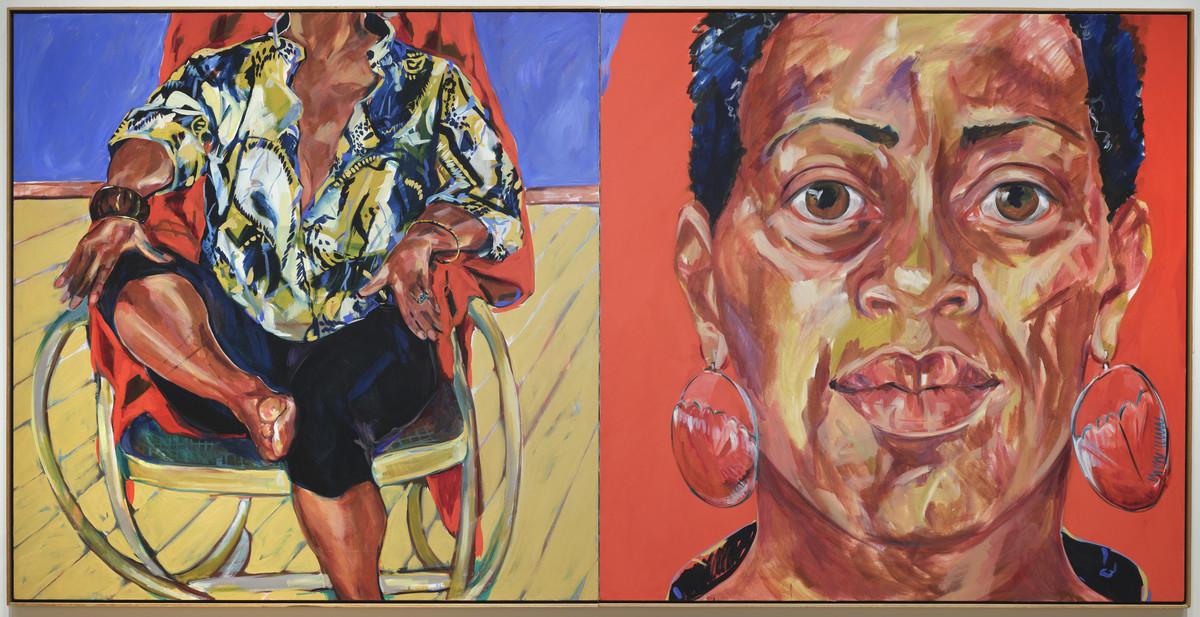
One of the works that stood out to me was “How Many Colours Has the Sea” by Charles Campbell exhibited at The Power Plant. The artist’s use of colour was mesmerizing. It was as if the arts of works were glowing and imitating an aura. On top of that, it was like the colours were moving and blending into each other. I personally like to play with colour in my own work. However, I have never thought about combining the colours Campbell did to achieve such glowing and vibrant contrast. Looking forward, I will definitely be keeping in mind the colour pallet Campbell used to great this glow while also paying closer attention to the colour palette I pick.

My Crops Are Dying But My Body Persists
Moser does a great job when it comes to integrating pop culture into her work. When we first start off the video experience we hear an oddly familiar voice. It is as if Siri or Alexa is talking to us directly. It immediately sets the tone for the popular ASMR concept with other absurd objects. The Artforum review perfectly describes the meaning of ASMR as “the sequence is pleasurable and calming to watch” and I totally agree. For instance, when she puts the manikin foot into a croc filled with shaving cream it results in the shaving cream oozing out of the Croc’s holes.
Moser also includes the popular theme of beauty culture. A standout moment is when she delicately puts facial cream on toast as if it were her face. Or when is glares at her reflection in the mirror with almost a confused look on her face. This just shows how pop culture is obsessed with their appearance and how people see them
Moser only seems to use mostly very calm neutral colours. She uses them in both her clothing and in her props. The Artforms statement of: “Moser wearing silky pink pajamas while prostrate on a sofa in a white, vaguely neoclassical room” proves that as well. It is as if she is too scared to involve something vibrant in her work. There is almost a fear of involving bright and eye-catching outlier colours that the public eye is more likely to reject.
If I’m being honest the only thing I physically experienced is discomfort. Then Moser was doing movements in the muscle suit I felt icky seeing muscles without skin covering them. Other than that I cant say I experienced anything else. If anything, I caught my mind wandering off from the subject or topics involved in the video most of the time.
Moser poses many ideas and questions in her art. However, there are two that really stood out to me and that would be “ white privilege” and the “bourgeois”. She speaks a lot about white privilege and how the leads to fragility. For instance, she places band-aids on the corners of the white toast or how adds a facial cream to the toast almost to relieve the slice of white bread of its hardships. I also saw the idea of the “bourgeois” through her luxurious background/backdrop, nice-looking sofa, clothing ( silking pj’s), and props that were on the table. For example, she displays a gold mirror, nice-looking vases, ceramics, and Himalayan salt which the Artform states is a “displays of “haute” consumerist taste”.
Moser tends to use absurdity to display the strange and odd modern everyday life. by using absurd objects it makes the viewer question what is seen as normal and absurd. It disrupts the way the modern person thinks and processes things. In addition, using strange objects helps her to talk about sensitive topics that would be seen as sensitive to a population.
Our Feat – Lamiss G. and Riya V.
Video #1: The One-Shot
‘Utility Lines’
With the objective to challenge ourselves with a more struggled feat, we chose a medium that does wouldn’t practically or usually receive the treatment of braiding. We braided together a vacuum pipe, garden hose, and extension cord as these larger objects are not conventionally braided, however, are braidable, and this we wanted to explore. The accomplishment of this feat was to execute a fluid motion, to let the materials behave as they do while being manipulated into the form of a braid. We wanted to explore the simplicity of braiding in some of our other takes, so it this piece, we wanted to explore the bizarre.
Video #2: The Sequence
‘Bound By What We Carry’
Our series of braids where out feat of braiding is applied to finding as many items on our body to braid into each other. One of our equirements was to have one of each of every medium to bind our two bodies together. This series explores levels of intimacy, discomfort, and comfort. The other requirement was the braider was responsible for actively gathering the material they’ll braid, meaning they undo and gather their partners shoelaces, belt, and hair for them.
Video #3: The Loop
“The Making and Unmaking”
We found a unique way to repeat our action that would effectively look like an endless braiding and unbraiding loop. It’s two personal motives that continuously work together towards their own goal: One person making the braid, one person unraveling the braid. It’s not really going anywhere, not ever growing or shrinking, just two people manipulating the same braid and it never really changes as long as they both work on their sides.
Audio Assignment: Group Chat
For this assignment, I wanted to capture the mundane overwhelming experience of being a part of a group chat. This is because many people in my generation suffer from overstimulation. One everyday event is being part of a group chat. This event can be an honour to be part of but also very distressing.
To make this audio I used real group chat messages from my friends and ideas. Then I put them through a text-to-speech software that always picked the computerized voice I wanted to use. From there I edited the notification sounds.
Open Studios
On Wednesday, March 19 I got the honour to view all the amazing MFA students’ studios and the capstone students’ studios. This was just an amazing experience! I got to meet and get to know artists that I have been looking up to for a while. I also loved seeing the different creativity and art styles each studio had to offer. It was inspiring and empowering!
Overall, I’m really grateful for the blog assignment. I honestly wouldn’t have been able to push myself to see and meet the amazing people in the art community if it was required for the blog post.
some pictures!
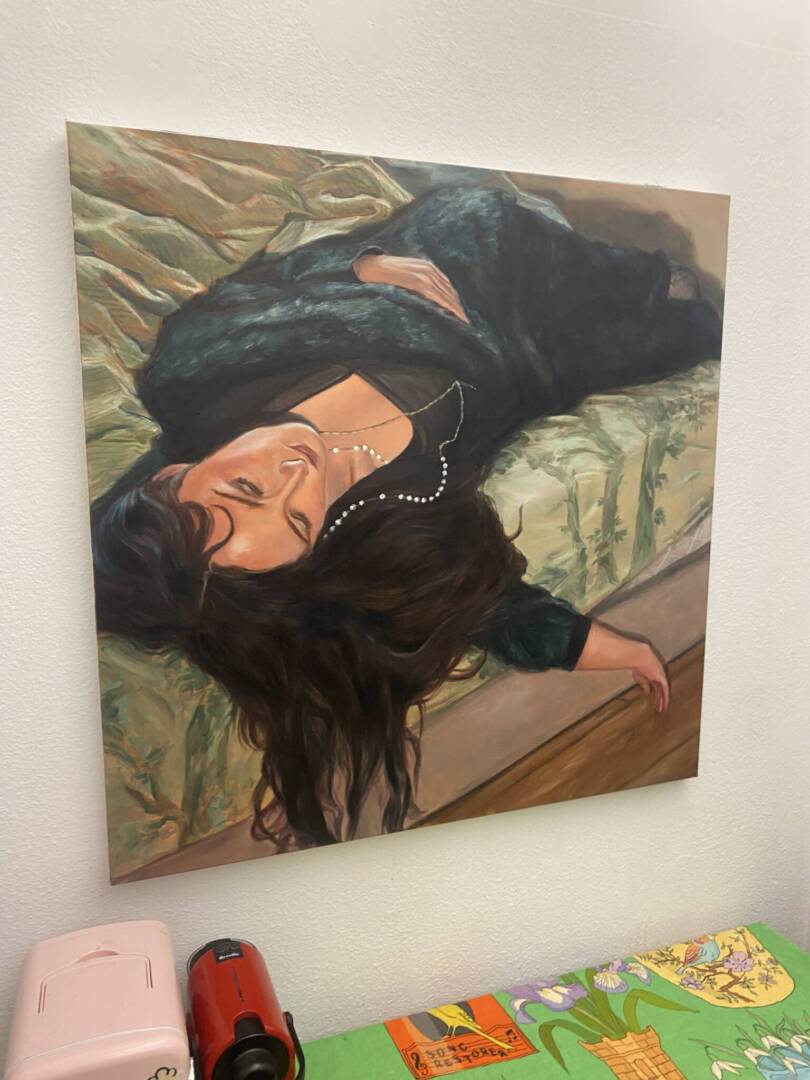
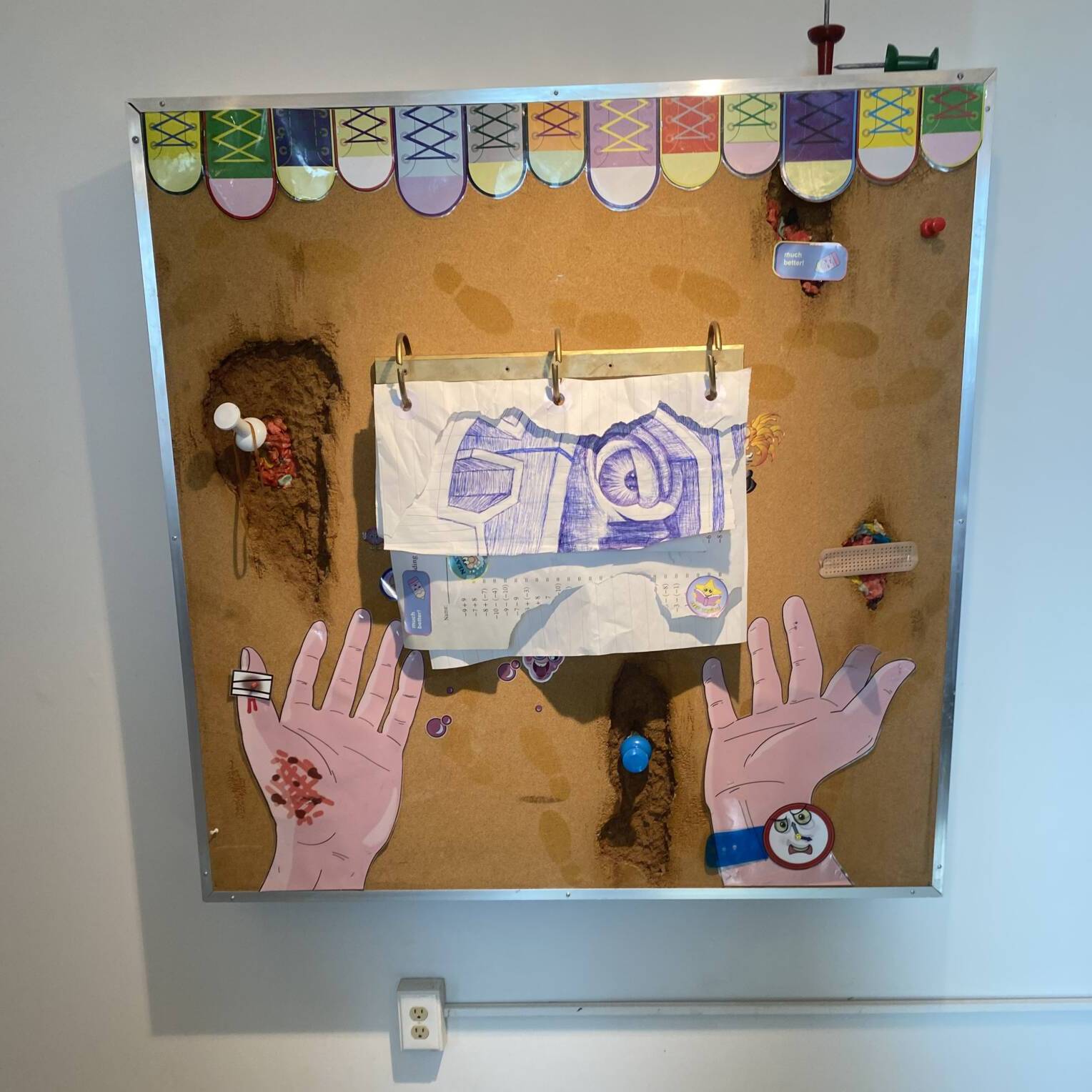
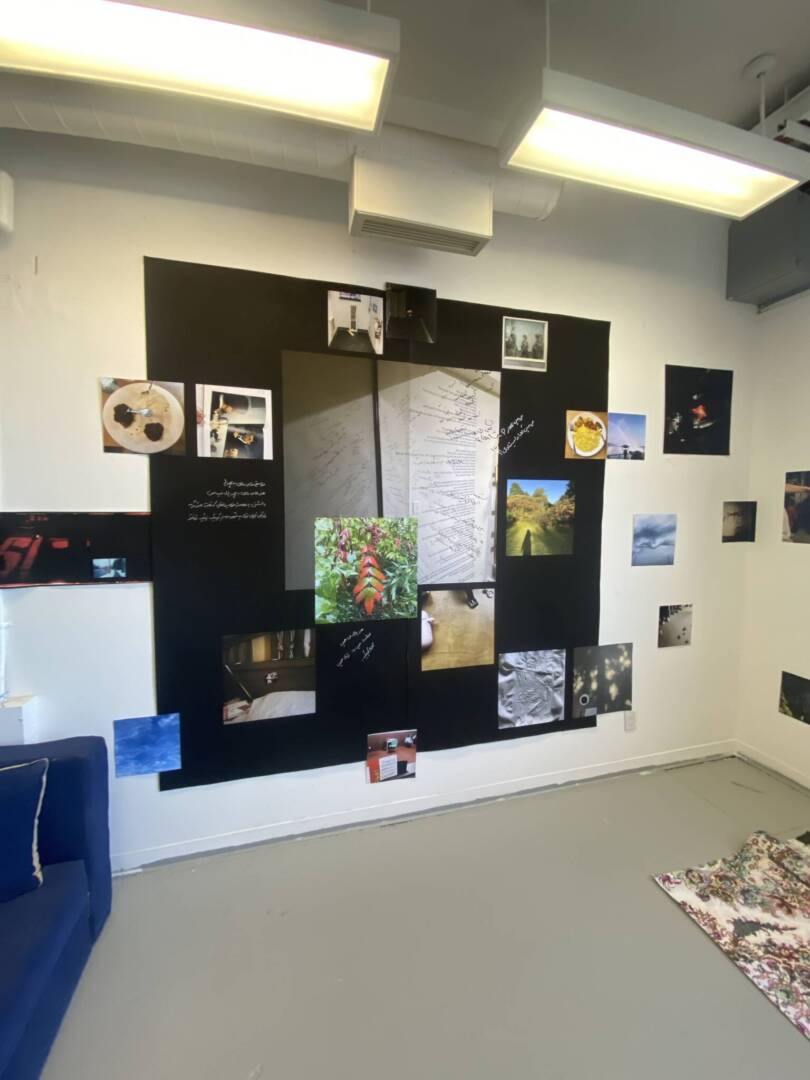
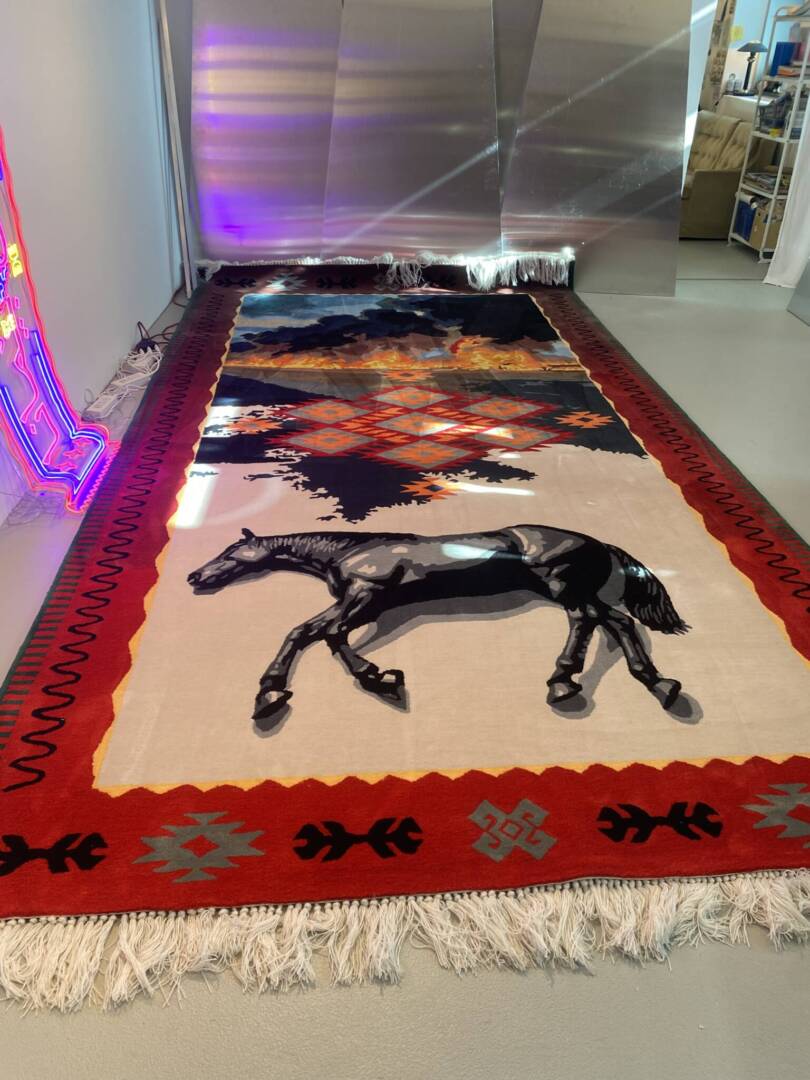
Conceptual Portrait – How Artists see me
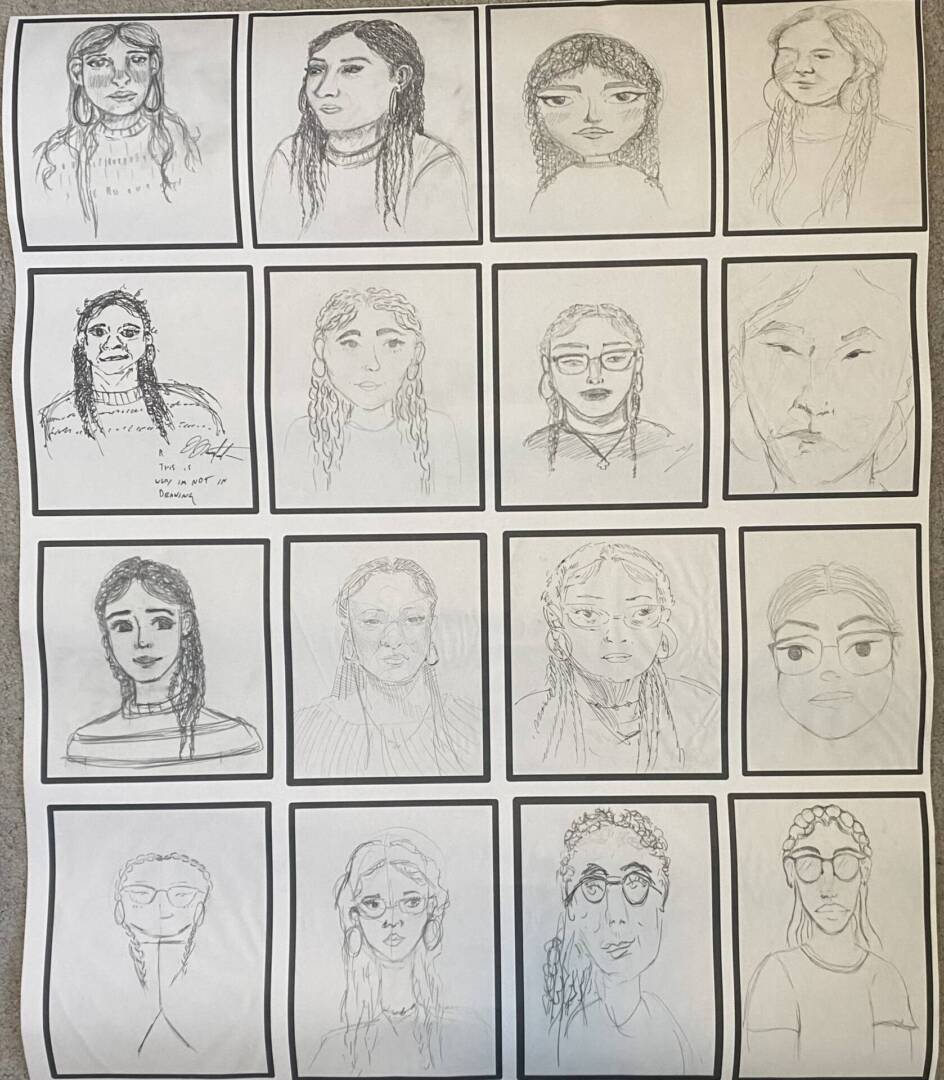
For this project, I wanted to see how artists saw me. So I went around in the art buildings and asked artists to try to capture my portrait in whatever way they wanted to. The only limitation they had was a 10-minute timer. This timer was used as a way to have the artist act on there first impressions of my face rather than over think and analyze my facial features. I provided each artist with a piece of paper and either a pencil or pen to choice from to make they drawing experience as natural and comfortable as could be.
I first asked artists in my class to draw me. After I had collected their work, I moved on to look for artists who had their studios open for the MFA open studios. I chose to do it during open studios because it allowed me the most access to artists in a short period of time.
After I collected all the portraits, I scanned them and organized them on a software. When that was finished, I printed them all on one poster to help capture some common features/likeness that artist captured
Button Assignment

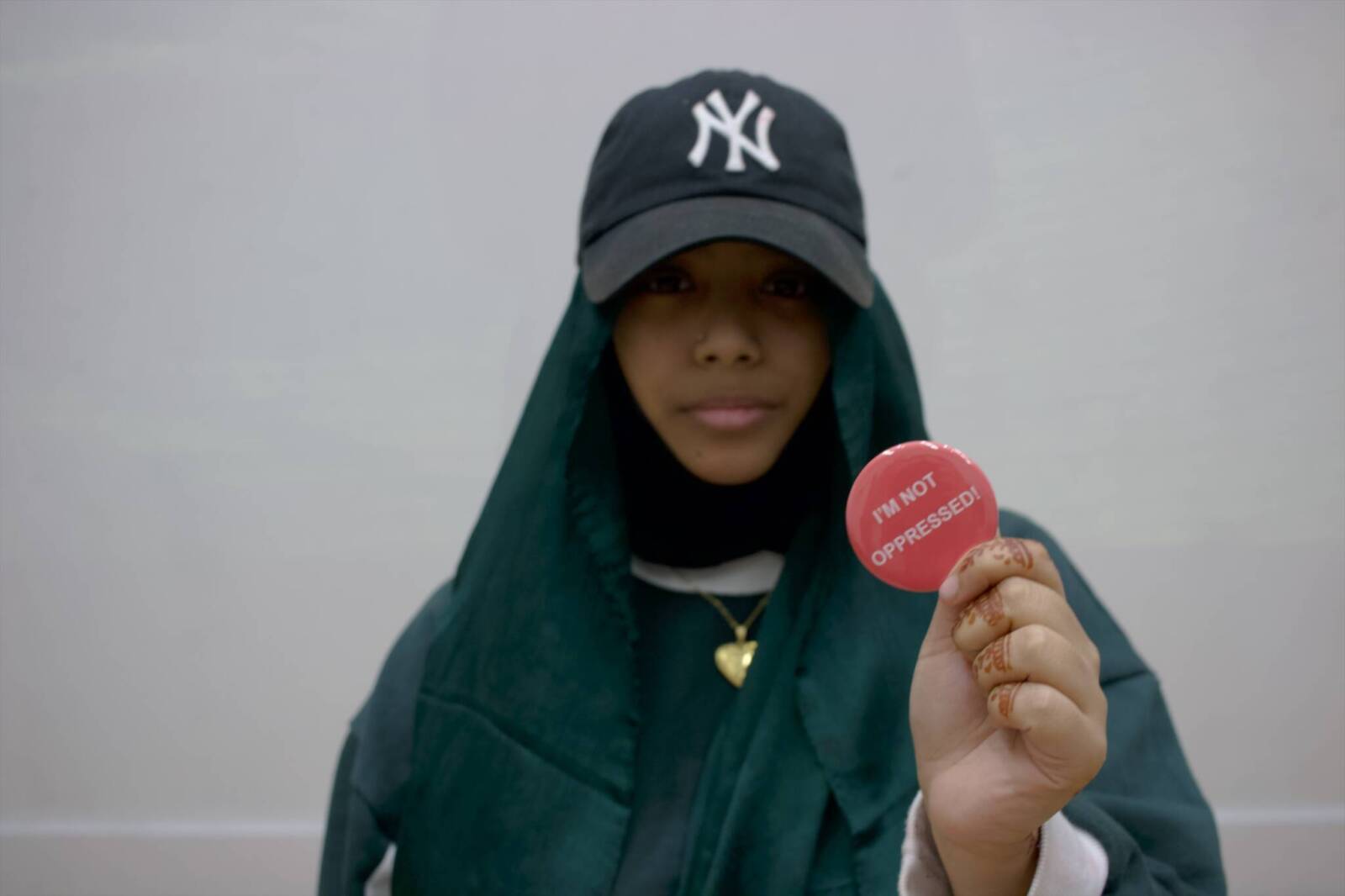
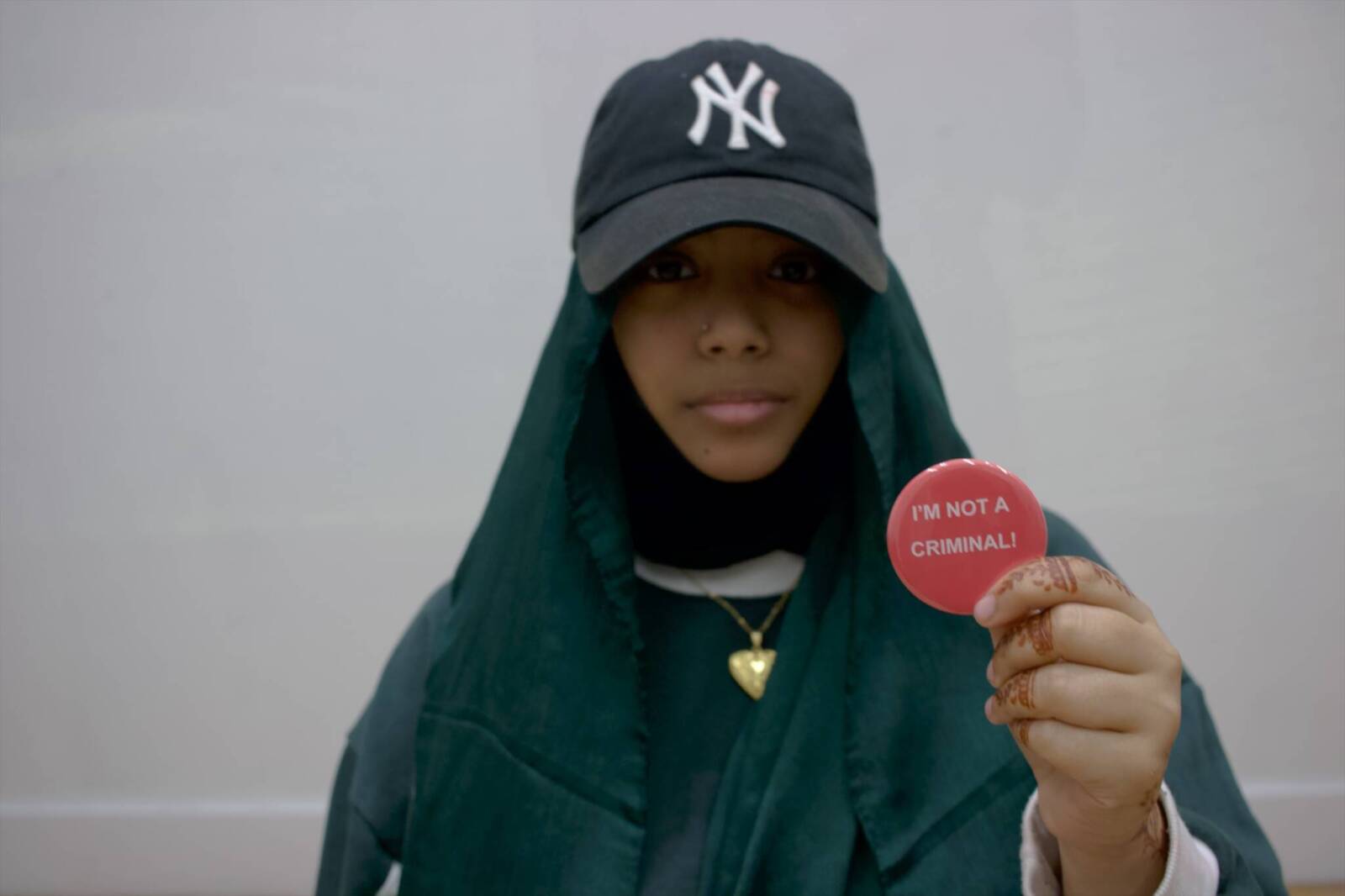
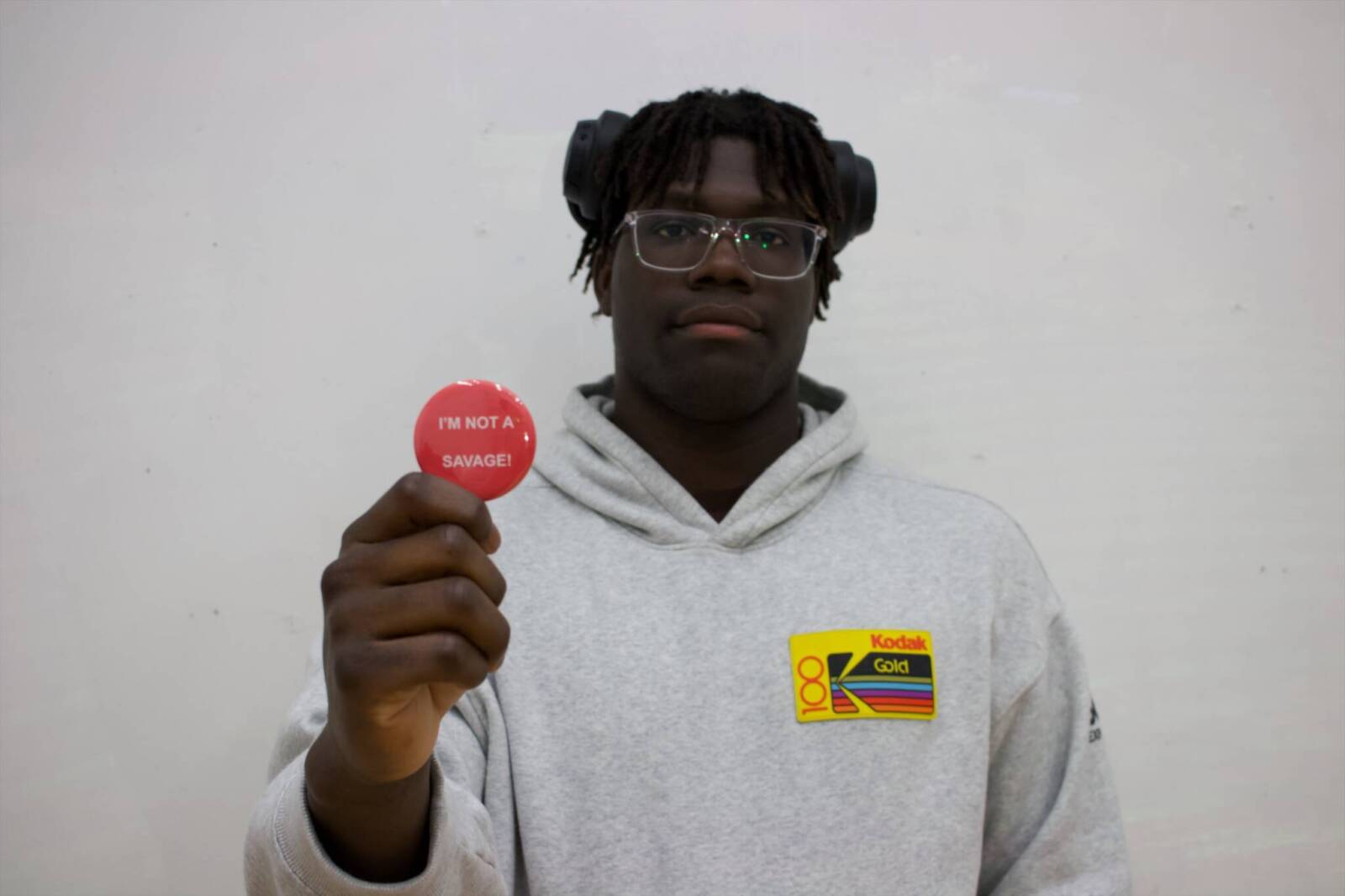
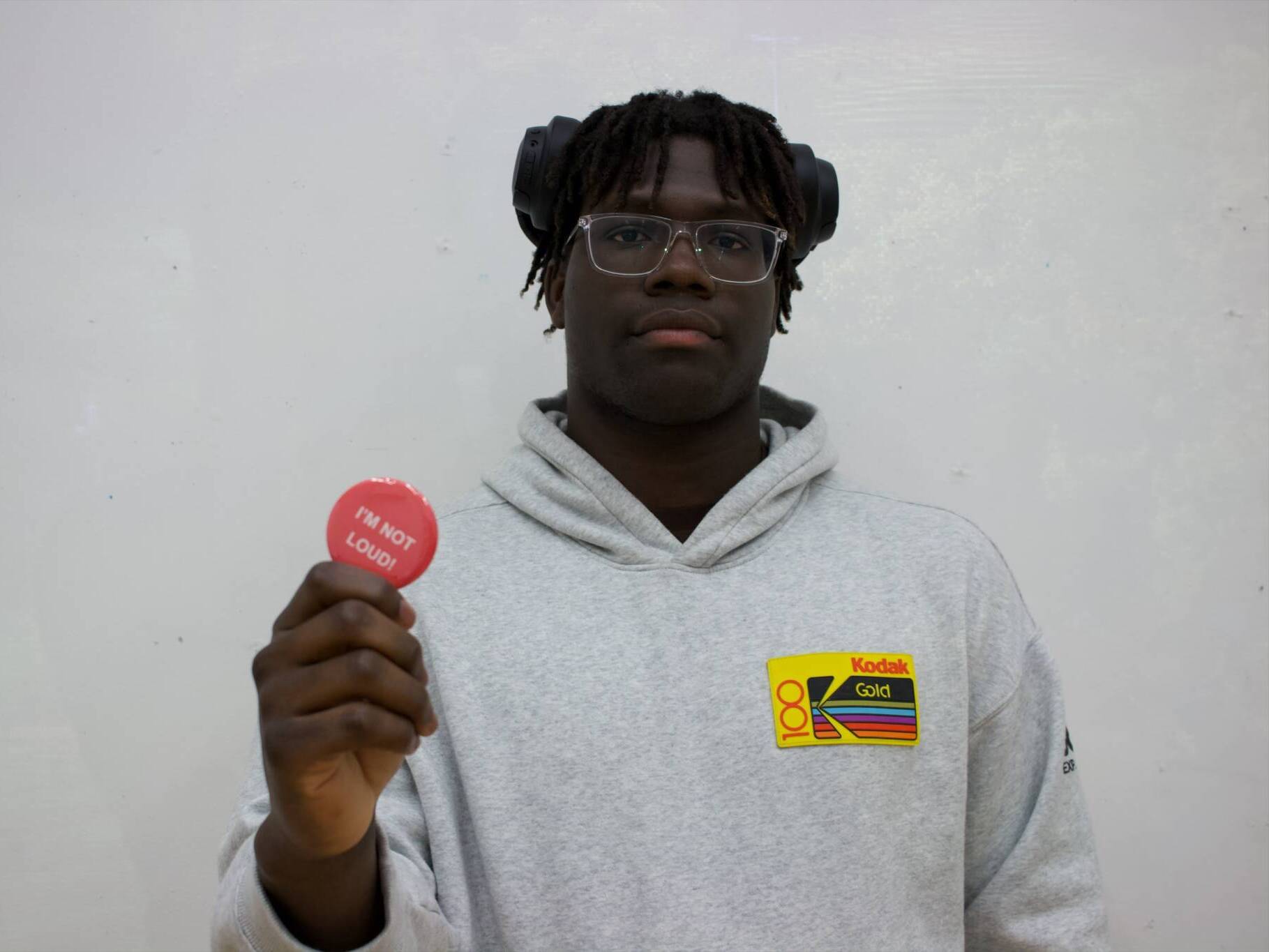
For this last assignment I wanted to emphasis the stereotypes and stigma that Arab and African people go through everyday in a white dominated country. So to eliminate these untruthful stereotypes wanted to create buttons that state the TRUTH. At the end of the day Arab and African people are PEOPLE as help and deserve to be treated as such!
All of these stereotypes are ones that I have encountered has and Arab/ African women in my life. They have been either said to my face, said in literature I have read, or overheard people state.
These are all the buttons I created:
